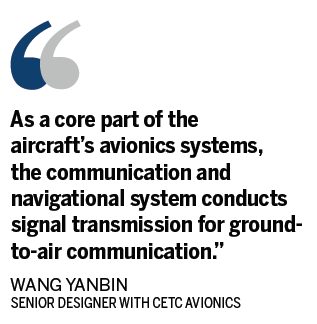Civil-military integration boosts science city's growth
The project will focus on researching space data, aerospace materials, 3-D printing technology and nano-electronics, with total investment reaching 10 billion yuan ($1.45 billion). Its plans include an innovation institute, a graduate school and an international exchange center.
The innovation port houses six teams led by six academicians of the Chinese Academy of Sciences and the Chinese Academy of Engineering. Their research will focus on Chengdu’s strategic emerging industries.
Wang Huaming ’s team, for example, specializes in 3-D printing technology. It plans to apply the technology to the large and complex metal components of aircraft, as well as rockets, high-speed trains and underwater vehicles.
Xu Huibin’s team focuses on specialized aerospace materials; Jiang Lei’s concentrates on bionic materials; and Fang Jiancheng’s focuses on researching quantum sensing applications.
The science city in the Tianfu New Area, China’s 11th national-level development area, has a planned area of 73 square kilometers, 16 square kilometers of which will be used to develop civil-military integration.
Local authorities have already mapped out six industry clusters scattered around Xinglong Lake: information networks, biomedicine, commercialization of scientific brea kthroughs, civil military integration, international cooperation and creative design.
To date, 119 key projects — including the Chinese Academy of Sciences' Chengdu R&D center, Tsinghua University’s energy internet research institute, Nokia’s global R&D center and Southwest Jiaotong University’s laboratory for rail transport — have been attracted to Chengdu Science City, with total investment of 160.7 billion yuan.
















